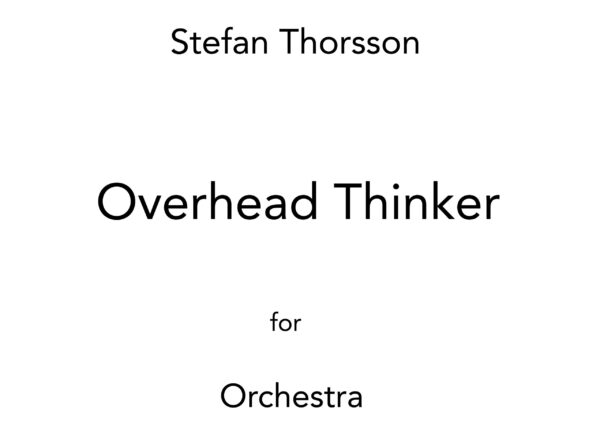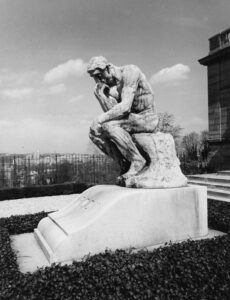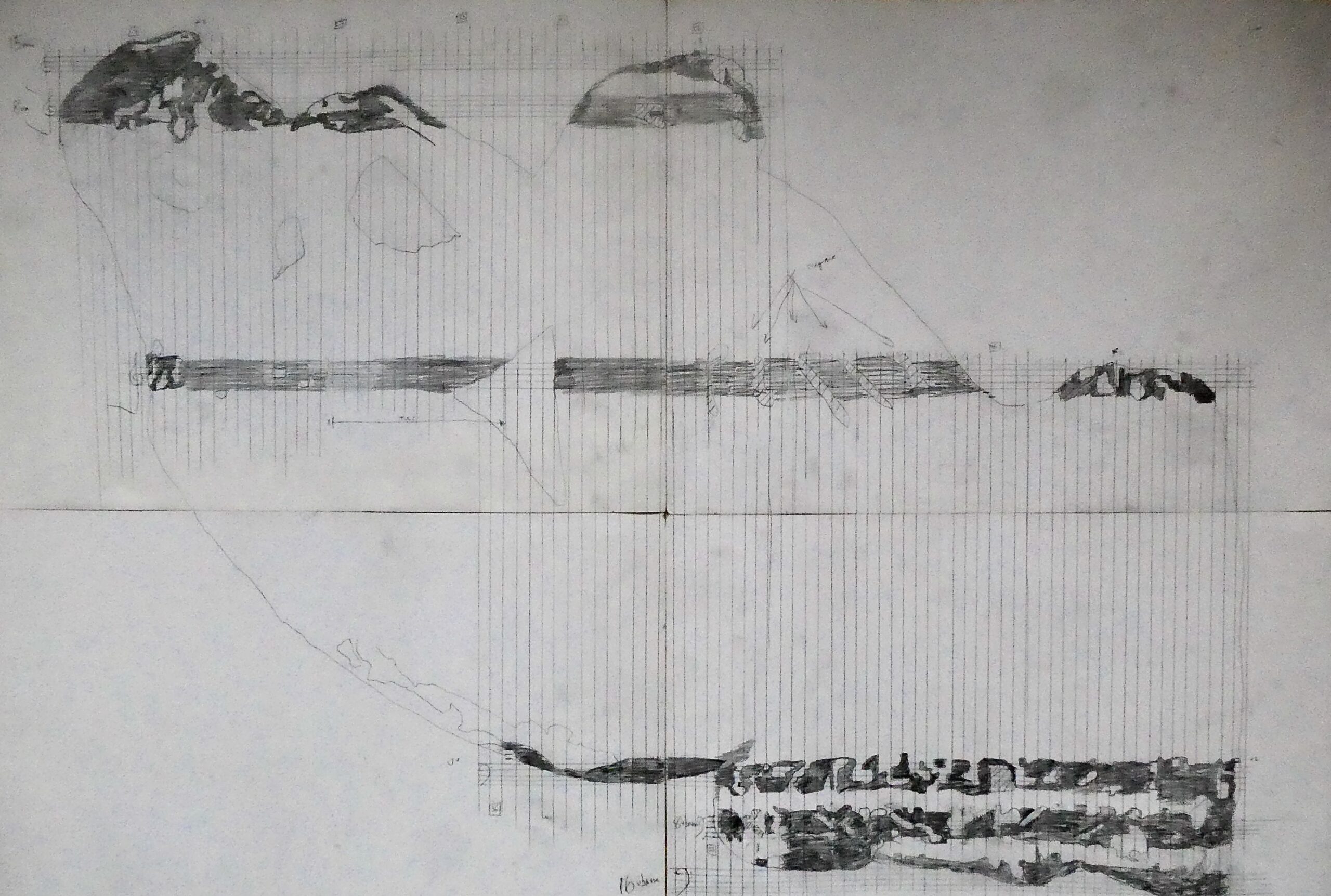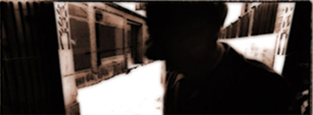Overhead Thinker

The Original Thinker
Modelled for The Gates of Hell 1882, exhibited in its original size (0,7 m) in Copenhagen 1888. Enlarged (1,9 m) and exhibited in Paris 1904. Perceptions of the statue have varied widely. In the beginning – via rumors in times of political and social crisis – it turned into a socialist symbol and aroused strong reactions. Other early responses were partly disturbing as in ”brute manhood” or ”wild orangutang” as opposed to thoughtfulness.
One of the reasons to people’s changing narratives could be that the sculpture is like a Rorschach test; we project our own thoughts and feelings into it. Another important factor is that Rodin himself – being both an innovator and a savvy businessman – made around 40 copies in different sizes and media arousing varying dramatizations.
 Two well-known examples of how it was established in the world through pictures and word-of-mouth: In Greece – via ancient greek art – they called it the Mourner due to the closed hand supporting the chin, in parts of Asia it was received as sublime; in touch with God, comparing it to the sculpture Seated Bodhisattva.
Two well-known examples of how it was established in the world through pictures and word-of-mouth: In Greece – via ancient greek art – they called it the Mourner due to the closed hand supporting the chin, in parts of Asia it was received as sublime; in touch with God, comparing it to the sculpture Seated Bodhisattva.
Today; around forty copies (plaster or bronze) are known to the afterworld. One of them watches over Rodin´s tomb in Paris, which makes sense, partly because the artist himself never felt content with the result(s) and can therefore be looked upon as an extended lifelong artistic process of thoughts, partly – according to a well known theory – the figure is Rodin reflecting on himself.
Another copy that stood in the north tower of the World Trade Center, survived the 9/11 attack almost unscathed but then disappeared! In 2013, Sotheby’s in New York auctioned yet a copy for $15 million, which is hilariously ironical while – according to another theory – the sculpture represent Dante Alighieri contemplating humanity and its actions in his Divine Comedy.

The Overhead Thinker
In 2022, when moving old boxes around I found four A2 sheets. When put together and combined in the right manner it came out as a sketch of The Thinker in a lying position made from an overhead projector picture, dated to 2003, during my first year at the composition studies at the conservatory. The picture above shows the four pieces put together and with four musically possible layers/registers marked out, running through the sculptural body: Top/head (8va), middle (treble clef), low (bass clef) & bottom/fundament (8vb).
No text, no additional comments or hints on why or how. Peculiar since I can’t remember having a more than average (artistically) relationship to this object. But when searching for clues connected to it I came across a possible connection via another picture. Not the why and how from 2003, but reasons for realizing the idea today, twenty years later: a picture of the cast situated above the tomb of Rodin. It concerns the extended lifelong artistic process of thoughts and ideas, varying in different stages in life, depending on the actual situation and inspirational signs of the time.
So – musically speaking – is there a connection from any energy six feet under, up through the fundament, via its bent body, to reach and whirl around in the hemispheres, before returning with new doubts, in a never-ending circle of creativity? And how would that line of thoughts moving through the earth and stone and body and back down again sound? An old overhead projector sketch and a picture of a bronze body bent over a tomb constituted yet another proposal to the viva voce of The Thinker.
Duration
17 min.

